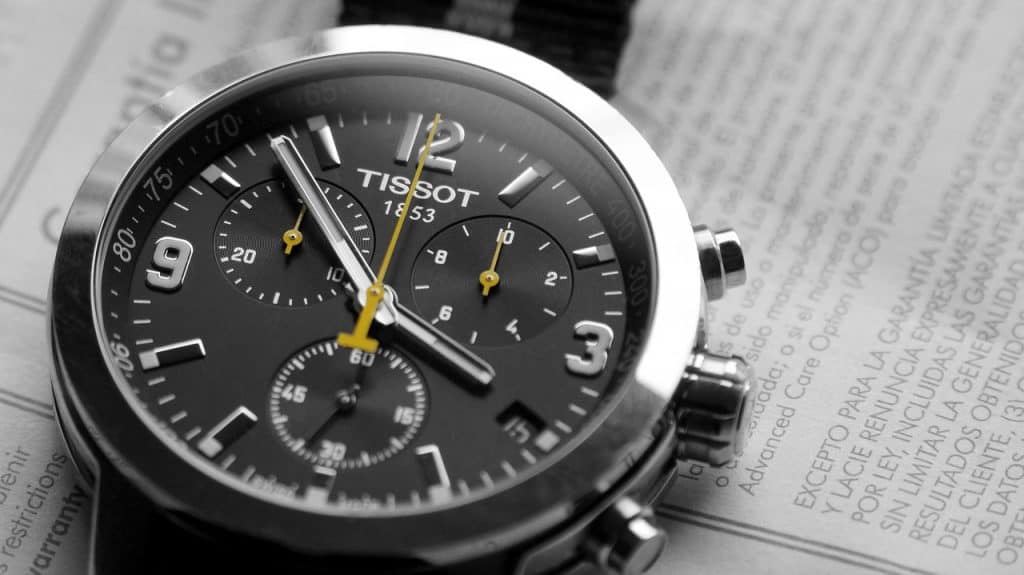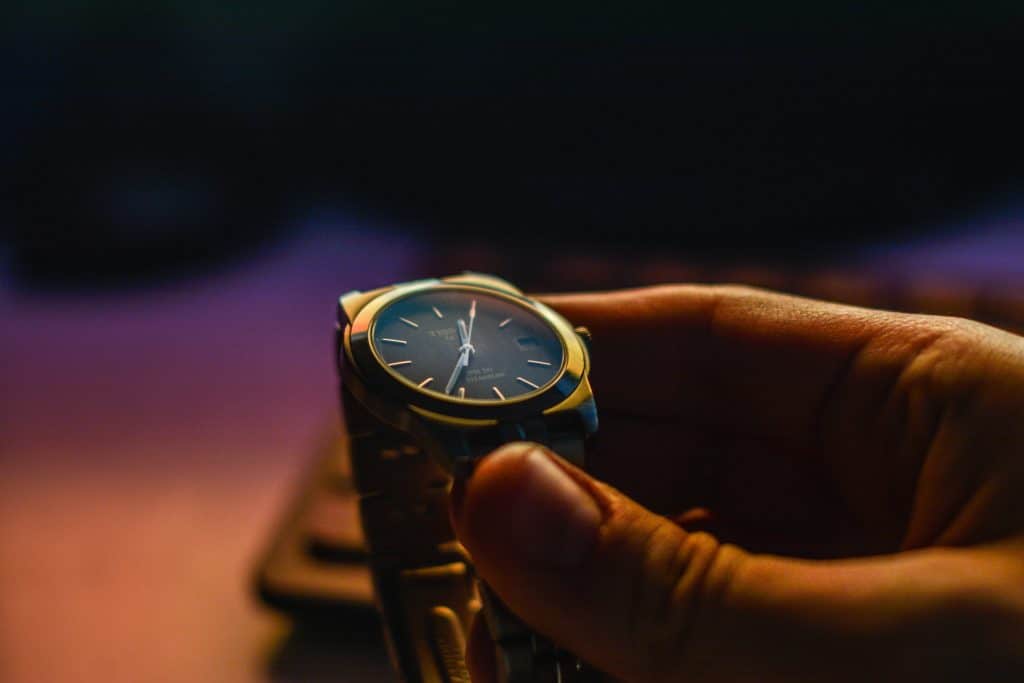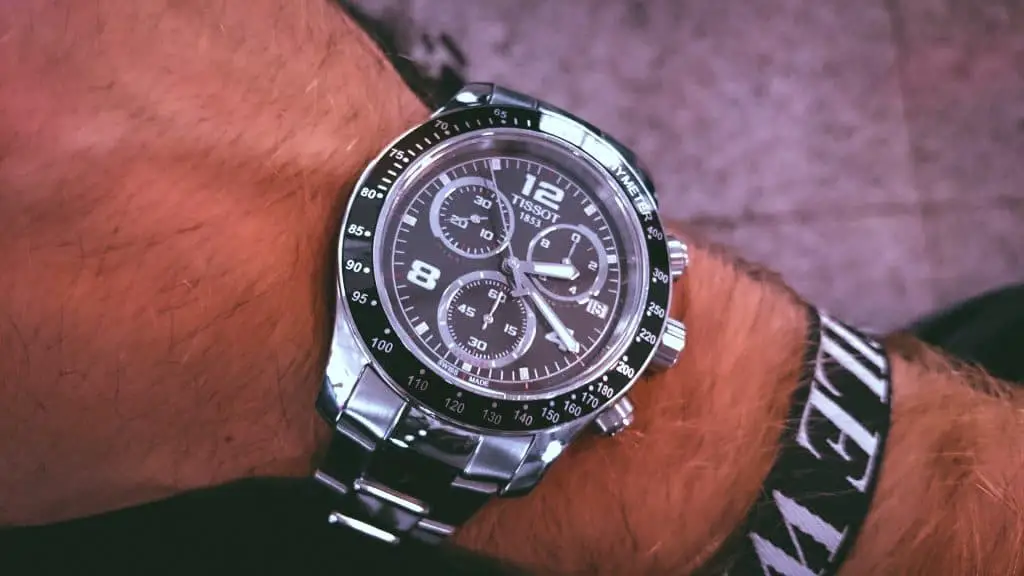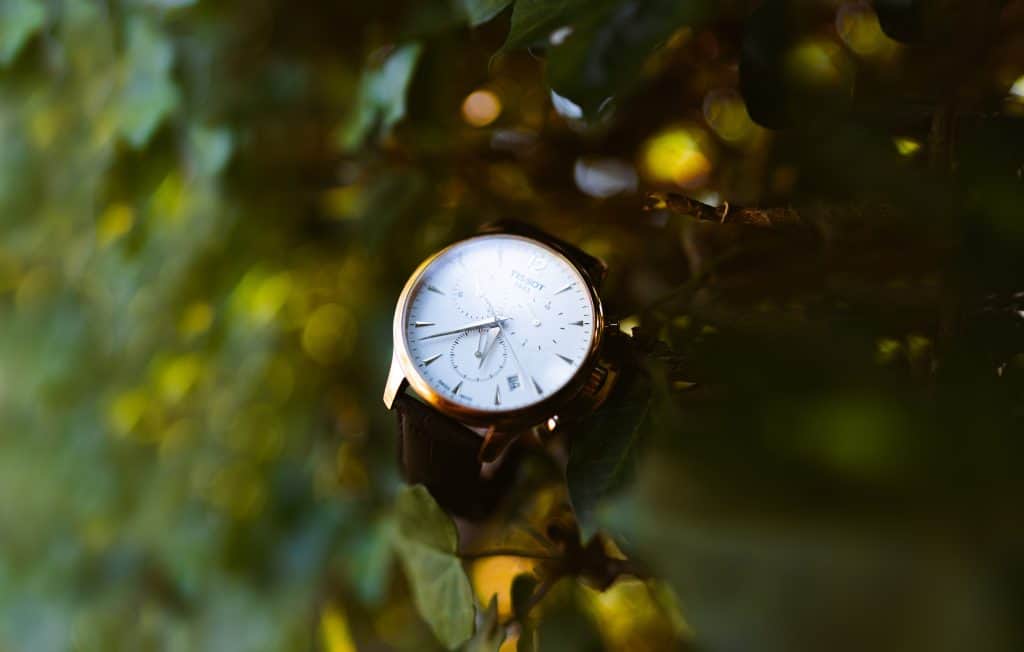Tissot is a highly regarded watch brand with some stunning timepieces. Their watches come at quite a cost, though, but why are Tissot watches so expensive?
Tissot is a well-respected watch brand that makes their watches in Switzerland using only high-quality materials such as 18K gold and sapphire crystals. They pay great attention to detail and ensure a fantastic product. This all bumps up the price, leading to a more expensive watch.
Despite being called an affordable luxury watch brand, Tissot’s watches are still relatively pricey. In this article, we’ll detail why Tissot watches cost as much as they do and whether or not they’re worth the price!

Table of Contents
Why Are Tissot Watches So Expensive?
The price of a Tissot watch typically ranges from about $500 to $3000. Their quartz models can usually be found for under $1000, while their more high-end range can go as high as several thousands of dollars.
Compare these prices to those of other Swiss watch brands, and you’ll notice that Tissot offers their watches relatively affordable. But compare Tissot’s prices to those of Seiko or Fossil, for example, and it’s clear that Tissot’s watch prices are still on the higher end.
A few key factors play a role in pricing a watch. Of course, the materials used are always important, but so are the manufacturing process, the durability and reliability, and the namesake of the brand.
Materials
Tissot is part of the conglomerate Swatch group. Other watch brands under the Swatch Group are Omega, Blancpain, Rado, Longines, Brequet, and Hamilton.
Because Tissot is part of this large conglomerate, it isn’t uncommon for Tissot watches to share a manufacturing process with the other brands.
For example, many Tissot watches share the same movement as many Omega watches. The main difference between these two brands is that Omega is positioned as more of a luxury brand that directly competes with brands such as Rolex.
On the other hand, Tissot is positioned as a more affordable alternative. Regardless, these two brands share the same movement.
In other words, a much more affordable Tissot watch contains the same movement (heart of the watch) as a much more expensive Omega watch.

Other than the movement, Tissot also doesn’t shy away from using the best materials to make their watches. High-quality leather and stainless steel are used, and their golden watches contain 18K gold.
All watches are equipped with a sapphire crystal, the best material available for the watch face. Sapphire crystals are the most scratch-resistant crystals out there, only able to be scratched by actual diamonds.
All in all, Tissot uses high-quality materials. These materials naturally cost more than the cheaper alternatives, which is reflected in the price.
Manufacturing
Tissot’s manufacturing process is the main reason why they are actually able to keep the price down. Keep in mind, Tissot watches are fairly similar to the likes of Omega, which retails for five times as much.
As part of the Swatch Group, Tissot’s manufacturing process is shared with some of the other brands. And we all know that producing on larger scales typically leads to slightly lower production costs.
On top of that, Tissot sources as many of its components as possible. In order to adhere to the guidelines set in place for products to be called Swiss-made (more on that later!), no more than 40% of the components can be sourced from other countries.
Tissot makes use of these guidelines by sourcing as much as possible. On top of that, there are some loopholes in place that allow Tissot to source just a little more of their components.
The complete assembling process takes place in Switzerland, though, and most of the components used are Swiss as well. But due to them being able to source many components, they can keep the costs lower than they would be if everything was made and manufactured in Switzerland.
In comparison, Rolex watches are fully Swiss-made. Every component is made in Switzerland, but the average hourly wage in Switzerland is about five times higher than in most other countries. This essentially means that it’s about five times more expensive to assemble and make all the components of a Rolex watch.
Still, more than 60% of the Tissot watchmaking process takes place in Switzerland, which definitely drives up the manufacturing costs.

Durablility And Reliability
Tissot watches are known for being durable and reliable. Tissot has both quartz watches, as well as mechanical and automatic watches. A quartz watch functions on a simple battery, and despite being less intricate and much simpler, quartz watches are known for being extremely accurate.
As for their mechanical and automatic movement, their Powermatic 80 is worth mentioning. Mechanical and automatic movements require manual winding or movement in order to function, and the industry average power reserve (how long the watch keeps ticking if it’s not worn) is about 48 hours.
Tissot’s Powermatic has a power reserve of 80 hours, nearly 40% more than the industry average.
Aside from the watch’s inner workings, the exterior is also highly durable. We talked about the materials used for Tissot watches, which are some of the best out there. When you combine these sturdy materials with a service every couple of years, a Tissot watch will last many, many years.
Namesake
Namesake is typically an important part when it comes to luxury watches. Luxury watch brands do everything in their power to keep the brand’s name in high regard. And that often means they bump up the price a bunch to fit the luxury feel they want to promote.
With Tissot, this isn’t as extreme as with the likes of Richard Mille or Patek Philippe, but even the Tissot name commands respect.
Tissot is often seen as the affordable luxury watch brand, but as the name already gives away, they’re still a luxury watch brand. And with the luxury appeal comes a higher price.
Is Tissot Considered A Luxury Watch Brand?
Tissot is not officially classed as a luxury watch brand but is often seen as an entry-level luxury brand. Tissot watches sit in the middle of the Swatch Group portfolio of brands and are produced on a large scale.
The most important aspect in classifying a watch as a luxury watch is the movement. A watch simply cannot be classified as a luxury watch if the movement isn’t made in-house. This is actually the reason why Tag Heuer isn’t actually classified as a luxury watch brand, shockingly.
Tissot watches do have their movement made in-house, although it’s slightly more complicated than just that. Since Tissot is owned by the Swatch Group, which also owns the movement-making company ETA, a Tissot watch with an ETA movement is technically still a watch with an in-house-made movement.
This here really is the main controversial point in whether or not Tissot is a luxury watch brand. Aside from the movement, Tissot ticks most boxes. They use high-quality (and exotic) materials, their name is synonymous with luxury watchmaking (although only at the entry-level point), but they’re just not all that exclusive.
Every year, about 3.5 million Tissot watches are produced. This is not only a sign that Tissot watches are not hand-made, but also that there’s a large supply of them
And when we look at the Swatch Groups portfolio of brands, Tissot actually sits in the middle range, behind the likes of Longines. This could be a sign that Tissot is in fact not a luxury watch brand.
With all that said, most people do regard Tissot as an entry-level luxury watch brand. Tissot offers superb quality watches for high but affordable prices. Many do actually see Tissot’s watches as Swiss luxury watches.

Where Are Tissot Watches Made?
The complete manufacturing process of Tissot watches takes place in Switzerland. The Tissot headquarters is also located in Switzerland, the movement used in the watches is Swiss, and inspections are done in Switzerland. This makes Tissot watches fully Swiss-made.
The term ‘Swiss-made’ carries a sort of prestige with it. Regular audits ensure that companies that title their watches ‘Swiss-made’ actually adhere to the set terms. Simply put, there are two requirements:
- Swiss movement. The watch must contain a Swiss movement (at least 60% if the movement originates from Switzerland).
- Assembled and inspected in Switzerland. These crucial steps in watchmaking must be done in Switzerland.
Although, there are some loopholes in place. It’s rumored that Tissot actually outsources as much as they can. To adhere to the Swiss-made guidelines, you cannot import more than 40% of the components. The loophole, however, is this; you can import all the individual parts and assemble them in Switzerland, classifying them as Swiss-made.
We do know for sure that the watches are assembled and inspected in Switzerland, and loopholes or not, Tissot does adhere to the guidelines of Swiss-made.
If you ever were to find yourself with a Tissot watch that says it was made anywhere else in the world, it’s an obvious sign that it’s a fake.
Are Tissot Watches Worth It?
Tissot watches are definitely worth the money. The brand offers quality luxury Swiss watches at much more affordable prices. Their watches are durable, accurate, luxurious, and made with great quality materials.
The best way to summarize a Tissot watch is this; Tissot offers luxury Swiss watches for affordable prices.
This is not to say that Tissot watches are cheap, as, for most people, a Tissot watch is actually quite expensive, but Tissot definitely offers some of the best value for your money.
